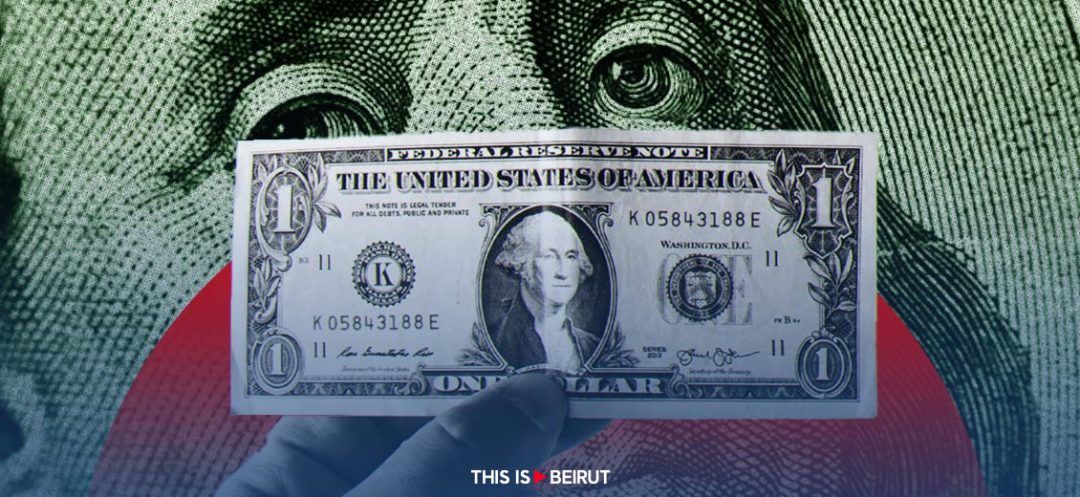
For those wondering when the bank dollar exchange rate is going to increase, it is becoming increasingly clear that it won't happen anytime soon. It's a complete mystery. The causes are many.
The government, the Central Bank of Lebanon (BDL) and the Ministry of Finance continue to pass the blame, leaving depositors frustrated.
None of them is eager to take responsibility for increasing the bank dollar exchange rate, commonly referred to as the “lollar,” due to the potential market implications of such a decision: it is widely acknowledged that an increase in the circulation of Lebanese pounds would once again fuel a high demand for the greenback. This is exacerbated by the government's continued reluctance to initiate either basic or structural reforms to revive an economy that has been on life support for over four years.
Meanwhile, depositors are caught in the middle, facing conflicting expectations from the three institutional actors. Many urgently need to withdraw funds to meet their basic needs, particularly due to the country’s triple-digit inflation.
Circular 151
In the meantime, it is important to recall that the impacts of Circular 151 issued by the Central Bank of Lebanon (BDL) came to an end on December 31, 2023.
This circular, outlining exceptional withdrawal measures from foreign currency bank accounts, predicted that the BDL would purchase “lollars” from commercial banks at a bank dollar rate of 15,000 Lebanese pounds, for a maximum of 1,600 lollars per account per month, until December 31, 2023. These provisions allowed credit establishments to “lirificate,” or convert this amount into Lebanese pounds, for account holders who wished to do so.
Today, with the absence of a renewal or amendment to Circular 151, banks are left with little leeway to maneuver. Where could they sell their “lollars,” and at what rates, if the Central Bank refuses to purchase them at the fixed rate of 15,000 Lebanese pounds per “lollar”?
This is partly due to some financial establishments completely halting lollar-to-pound conversions, while others have only partially suspended them. They now only allow lollar withdrawals at a bank rate of 15,000 Lebanese pounds per dollar for clients in urgent need.
Circular 166 Compromised
Furthermore, the non-decision regarding increasing the bank's dollar exchange rate compromises the implementation of Circular 166 issued by the BDL. This circular allows holders of foreign currency bank accounts opened after October 31, 2019 to withdraw $150 per month per account. This amount barely covers the cost of basic food rations for a miserable citizen, as indicated by acting governor Wassim Mansouri. This circular is thus incomplete. It requires further details on the amount in lollars that an account holder is authorized to withdraw in addition to the $150, and especially at what exchange rate.
What Does the Law Say?
In response to a recent question, caretaker Prime Minister Najib Mikati suggested that the decision lies with the caretaker Minister of Finance, Youssef el-Khalil. The latter, however, maintains that he has submitted the required documents to the Central Bank of Lebanon regarding this matter. Meanwhile, there is a notable silence from the Central Bank, with the vice-governor reportedly instructing various departments to maintain discretion on the issue.
According to legal sources consulted by This Is Beirut, it is suggested that it is Parliament's responsibility to vote on legislation regarding capital controls. Such a law could delineate the permissible withdrawal amounts, thereby influencing the potential increasing of the bank dollar exchange rate.
As for other sources, the designated authority on this matter, as per Article 297 of the Money and Credit Code, is the caretaker Minister of Finance who works in coordination with the Central Bank of Lebanon.
Meanwhile, rumors are circulating about a bank dollar rate of 25,000 or 30,000 Lebanese pounds, but no monetary authority is willing to provide any indication on the matter.
Read more




Comments